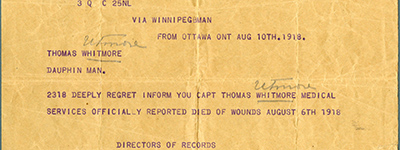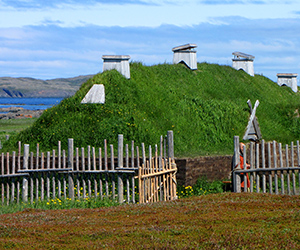CANADA HISTORY - Govenors General
The Earl Grey

Albert Henry George Grey, the 4th Earl Grey, served as Canada’s ninth Governor General from 1904 to 1911, and his tenure remains one of the most impactful and memorable in Canadian history. Born into a family of significant political influence, with close ties to the British monarchy and government, Earl Grey’s life was steeped in public service, and his years in Canada were defined by a deep commitment to the development, unity, and cultural heritage of the nation. Known for his progressive ideas on social reform, conservation, and his dedication to Canadian sports and culture, Lord Grey left an enduring legacy, which includes the iconic Grey Cup.
Early Life and Background
Albert Henry George Grey was born on November 28, 1851, in St. James Palace, London. His family’s close ties to the British monarchy shaped much of his early life. His father, Sir Charles Grey, served as private secretary to Queen Victoria, and his grandfather, the 2nd Earl Grey, was a former British Prime Minister, known for the 1832 Reform Act, which expanded the franchise and modernized the British electoral system. The young Earl Grey’s upbringing was thus infused with a strong sense of duty, public service, and reformist ideals.
Earl Grey attended Harrow School, one of England’s most prestigious public schools, and later studied at Trinity College, Cambridge. It was during these formative years that he developed a broad interest in politics, the British Empire, and public affairs. In 1880, he entered political life as a Member of Parliament for South Northumberland. His political career in the House of Commons, however, was relatively short, as in 1884, he succeeded his uncle as the 4th Earl Grey and took his seat in the House of Lords.
Public Service and Imperial Connections
Earl Grey was a strong proponent of the British Empire, believing deeply in its ability to bring civilization, development, and stability to its far-flung territories. His passion for empire-building led him to travel extensively across British possessions, forging relationships with key figures in colonial administration, most notably Cecil Rhodes, the South African statesman and founder of Rhodesia (now Zimbabwe and Zambia). Rhodes and Grey were close friends, and in 1896, Grey was appointed Commissioner of Rhodesia, where he played a key role in the administrative development of the colony.
His work in Rhodesia cemented his reputation as an astute administrator and imperialist, and by the early 20th century, Grey was considered one of the most influential voices in British imperial policy. His advocacy for responsible government in the colonies and his belief in the importance of imperial unity would later become central themes during his time as Governor General of Canada.
Appointment as Governor General of Canada
In 1904, Lord Grey was appointed Governor General of Canada, succeeding his brother-in-law, Lord Minto. Grey accepted the post eagerly, viewing it as an opportunity to influence the development of one of Britain’s most important dominions. At the time, Canada was experiencing rapid growth and industrialization, and its role within the British Empire was evolving.
Upon his arrival in Canada, Lord Grey quickly made it clear that he intended to play an active role in the country’s political, social, and cultural life. He and his wife, Lady Grey, undertook extensive travels across Canada, visiting every province and making a significant impact on the communities they encountered. Their travels, which also included goodwill trips to the United States, helped strengthen ties between Canada and both Britain and its southern neighbor.
Focus on Conservation and Social Reform
One of Lord Grey’s most enduring legacies as Governor General was his commitment to the conservation and development of Canada’s natural resources. At the turn of the 20th century, Canada’s vast forests were under increasing pressure from logging and industrial development. Grey, recognizing the long-term value of sustainable resource management, became a vocal advocate for forest conservation. His interest in land development also extended to agriculture, where he supported efforts to improve farming techniques and promote agricultural education across the country.
Another key area of focus for Lord Grey was penal reform. He believed in the importance of rehabilitating prisoners and sought to improve conditions within Canada’s penal system. His advocacy for more humane treatment of inmates and better prison management reflected his broader commitment to social justice and reform, ideals that were ahead of their time for many in his position.
Lord Grey’s forward-thinking views also extended to Canada’s future as a nation. He was known for his boundless optimism about the country’s potential and famously predicted that Canada’s population would reach 80 million by the end of the 20th century. Although his prediction proved overly ambitious, it reflected his deep belief in Canada’s capacity for growth and prosperity.
Cultural Contributions: The Grey Cup and Historic Preservation
Earl Grey’s most famous legacy in Canadian culture is the Grey Cup, a trophy he established in 1909 as an award for the championship of Canadian football. The Grey Cup remains emblematic of Canadian football supremacy and is one of the country’s most cherished sporting traditions. Grey’s support for sports reflected his broader interest in promoting physical fitness, teamwork, and national pride through athletic competition.
Beyond sports, Grey was also deeply committed to the preservation of Canada’s history and heritage. In 1908, he played a prominent role in the celebrations marking the 300th anniversary of the founding of Quebec City, an event that highlighted the city’s importance as one of the oldest European settlements in North America. Grey’s advocacy led to the designation of the Plains of Abraham, the site of the historic 1759 battle between British and French forces, as a national park. This move was part of Grey’s larger efforts to ensure that Canada’s historical landmarks were preserved for future generations.
Grey’s interest in historic preservation extended to other parts of the country as well. His influence was instrumental in the preservation of several important historical sites, helping to lay the foundation for Canada’s modern approach to heritage conservation.
Political and Social Challenges
Although Lord Grey was largely popular during his tenure, his term as Governor General was not without its challenges. The early 20th century was a period of growing political tension in Canada, particularly regarding the relationship between English and French Canadians. While Grey maintained a neutral stance in most political matters, his strong imperialist views occasionally put him at odds with French Canadian nationalists, who were increasingly wary of Canada’s close ties to Britain.
One of the key political issues during Grey’s time in office was the ongoing debate over Canada’s role in imperial defense. Many in English Canada supported closer military cooperation with Britain, while French Canadians were more reluctant to commit resources to imperial defense initiatives. Grey, as a committed imperialist, supported efforts to strengthen Canada’s military ties to Britain, but he also recognized the need to balance these interests with the concerns of French Canadians.
Despite these challenges, Grey was widely regarded as a unifying figure who worked to bridge the divide between Canada’s linguistic and cultural communities. His travels across the country, his efforts to promote Canadian culture, and his advocacy for social and environmental causes helped solidify his reputation as a progressive and forward-thinking Governor General.
Extension of His Term and Return to England
Due to his popularity and the success of his initiatives, Lord Grey’s term as Governor General was extended in 1909, allowing him to remain in office for nearly seven years—a longer term than most of his predecessors. His extension was a testament to the high regard in which he was held by both Canadian and British leaders, as well as the Canadian public.
In 1911, Lord Grey’s term came to an end, and he returned to England, where he continued to engage in public service. He remained active in various social causes, including education and charitable work, and he continued to advocate for imperial unity and the development of Britain’s overseas dominions.
Legacy and Death
Lord Grey’s legacy in Canada is far-reaching. His contributions to the conservation of natural resources, his efforts to promote Canadian culture and history, and his creation of the Grey Cup are lasting reminders of his influence on the country’s development. He is remembered as a progressive and engaged Governor General who believed in the potential of Canada and worked tirelessly to promote its growth and unity.
After returning to England, Lord Grey spent his final years at his family estate, Howick Hall, in Northumberland. He passed away on August 29, 1917, at the age of 65. He was succeeded by his son, Charles Grey, the 5th Earl Grey.
In the years since his death, Lord Grey’s contributions to Canada have continued to be celebrated. His name is synonymous with one of Canada’s most cherished sporting events, and his efforts to preserve the country’s natural and historical heritage have had a lasting impact on Canadian society.
Albert Henry George Grey, the 4th Earl Grey, served as a visionary Governor General during a period of significant change and development in Canada. His dedication to social reform, conservation, and the promotion of Canadian culture helped shape the nation during the early 20th century. From his advocacy for penal reform to his establishment of the Grey Cup, Lord Grey’s contributions left an indelible mark on Canadian history. His leadership during this formative period continues to be remembered as a time of progress, unity, and optimism for the future of Canada..
Cite Article : Reference: www.canadahistory.com/sections/documents/documents.html
Source: NA



